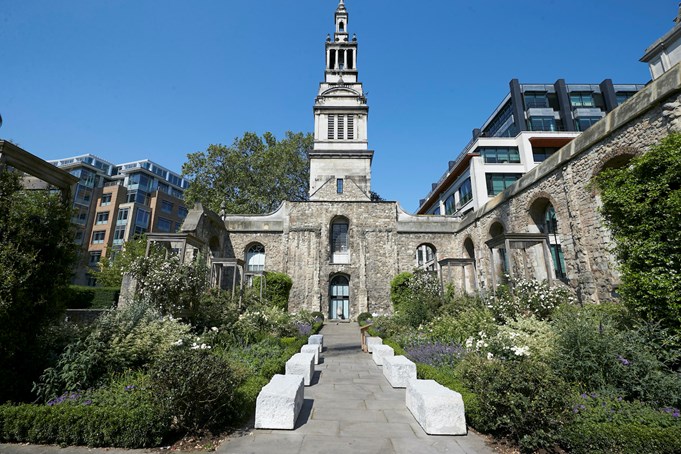Granite blocks removed as part of super sewer works used in new City of London project

Granite blocks removed from the Thames River wall as part of Tideway’s work on the super sewer have now been reused across the City of London as part of a new project celebrating the role of stone in the creation of the city.
A total of 58 blocks, each weighing around one tonne and first used as part of Sir Joseph Bazalgette’s river wall in the 19th century, are being temporarily reused in a project called From the Thames to Eternity.
They will be used in a variety of contexts, from acting as wayfinding features to seating and gathering spots, as well as places to reflect on their history.
From the Thames to Eternity is a temporary stone re-use project designed by Matthew Barnett Howland and Oliver Wilton from University College London and CSK Architects.
It is argued that this project can make a positive contribution to life in the City by stimulating discussion on the ‘circular economy,’ an idea that advocates for re-using materials, like these granite blocks, as a means of tackling waste, pollution and climate change.
Chairman of the City of London’s Streets and Walkways Committee, Graham Packham, said: “The Thames to Eternity project is a brilliant initiative that combines our commitment to delivering a thriving arts and culture scene for all to enjoy, with our goals for a sustainable, net-zero City by 2040. Events like these will enliven the City’s streets and venues, encouraging audiences to experience this part of London in a new way.
“I would like to encourage everyone to visit the installations if they get the chance. The stones have acquired a rich character that reflect 150 years of weathering and tidal movement, adding a layer of physical history to their cultural heritage.”
As a city built on clay and gravel, London has no native stone and so it has always been a precious commodity, flowing into the capital for continuous use and re-use. The City of London is a vibrant example of the historical importance of this material, with rich and diverse stone architectures dating back to Roman times.
The stones were quarried in the 19th century, mainly in Cornwall and Scotland, for use in Joseph Bazalgette’s Thames River wall at Victoria Embankment. They have now been removed to enable the new super sewer works, and will be installed across the City on a temporary basis, before moving on to their next long-term use in a forthcoming urban realm project.
The stones were gifted to the project by Westminster City Council, enabled by Tideway, prepared by CED Stone Group and installed on site by the City Corporation term contractor FM Conway.

